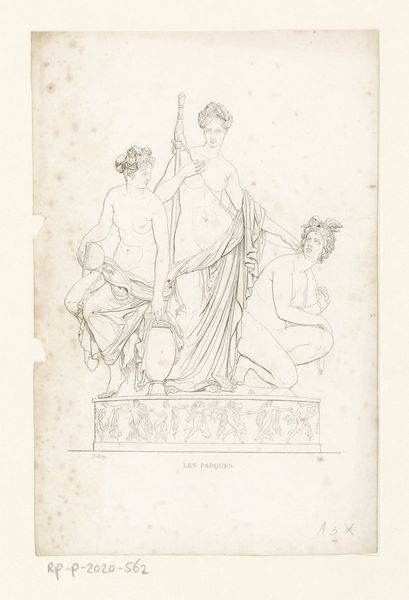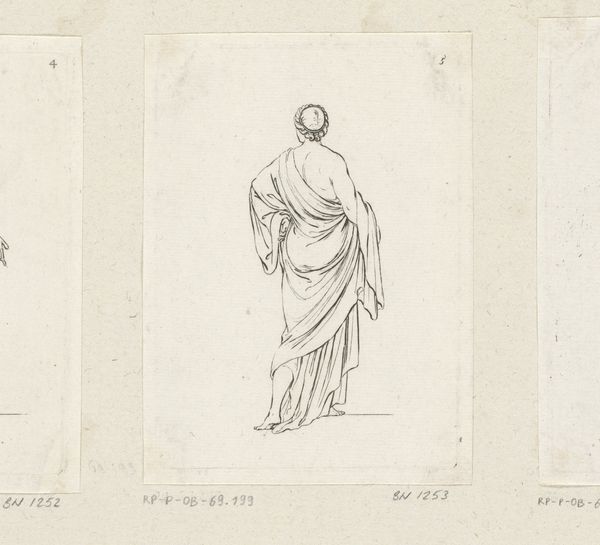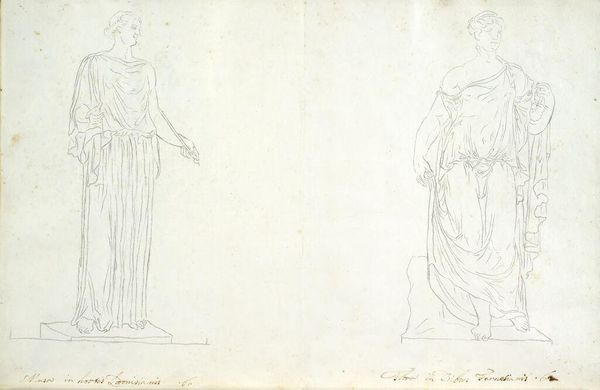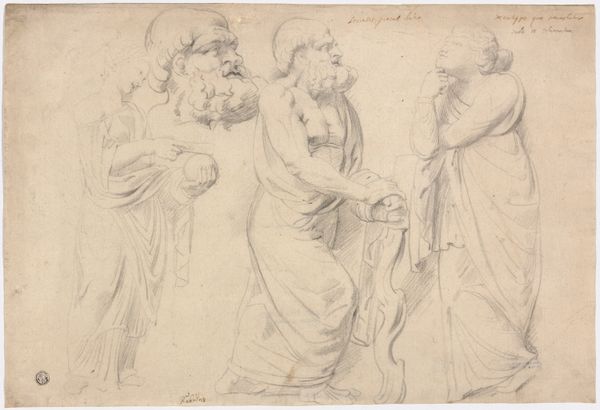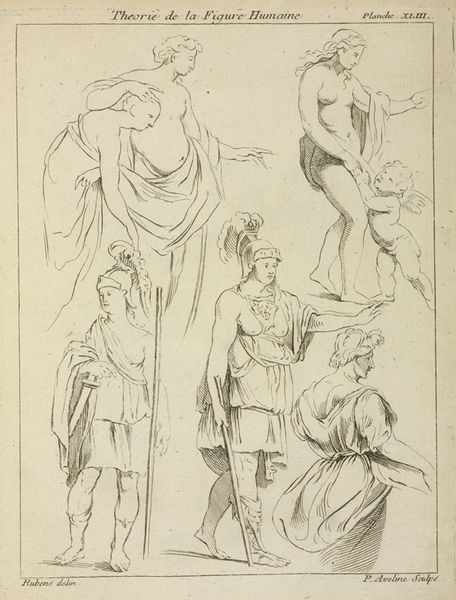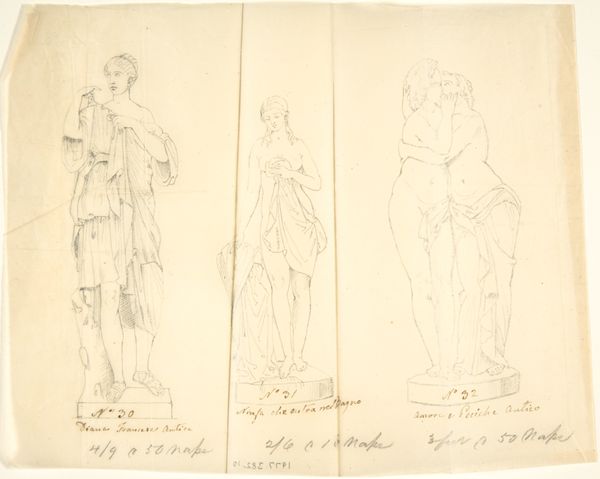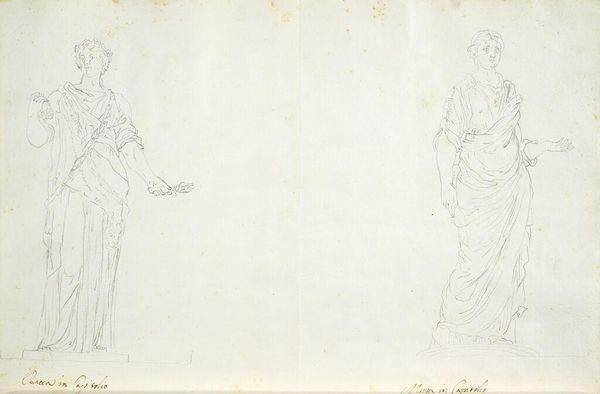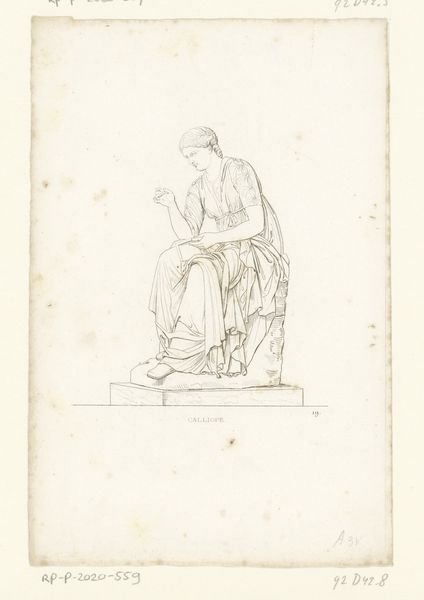
drawing, print, pencil
#
portrait
#
drawing
# print
#
classical-realism
#
figuration
#
ancient-mediterranean
#
pencil
#
history-painting
#
academic-art
Dimensions: 7 15/16 x 10 5/16 in. (20.2 x 26.2 cm)
Copyright: Public Domain
Curator: Here we have "Studies of Female Statues," an 18th-century drawing currently housed at the Metropolitan Museum of Art. It presents three distinct renderings of classical female figures. What strikes you most upon first glance? Editor: It has an austere quality, almost academic in its precise rendering of drapery and form, yet I find myself drawn to the quiet tension held in the poses themselves. They seem both powerful and strangely vulnerable. Curator: Exactly. It's critical to understand the function of such drawings during this period. They were often preparatory studies, the artistic labor involved in learning and mastering classical forms before undertaking larger, more complex history paintings. Notice the subtle differences in the rendering of the drapery; that represents considerable time invested in honing craft. Editor: It raises important questions, doesn’t it? Who made these drawings and why? How might these female figures be interpreted within their original context, and how does that shift through a contemporary lens? The statues clearly draw on a legacy of female representation heavily laden with the male gaze. Were these works challenging or perpetuating those narratives? Curator: That's a compelling consideration. We need to look beyond the classical subject matter to understand the socioeconomic realities shaping artistic production. Consider the sourcing of materials: pencils and paper would have been increasingly accessible during this period, fostering wider participation in art-making beyond the traditional elite. And we shouldn’t forget this would've involved studio assistants replicating the master’s forms—unrecognized labor vital to artistic output. Editor: The materiality is just one layer. The choice of classical statuary, the very act of idealizing the female form—that's inherently political. And thinking about spectatorship; how does our own cultural framework inform our interpretation? Curator: These preliminary studies often highlight a dynamic interaction between material constraints and creative execution. They reveal an evolving process that transforms a basic study into a potentially compelling depiction of classical form and academic practices. Editor: Ultimately, “Studies of Female Statues” compels us to investigate power and representation and how classical themes continue to resonate in contemporary artistic practices. Curator: And perhaps more broadly, a subtle demonstration of craft, value and labor in art historical settings.
Comments
No comments
Be the first to comment and join the conversation on the ultimate creative platform.

